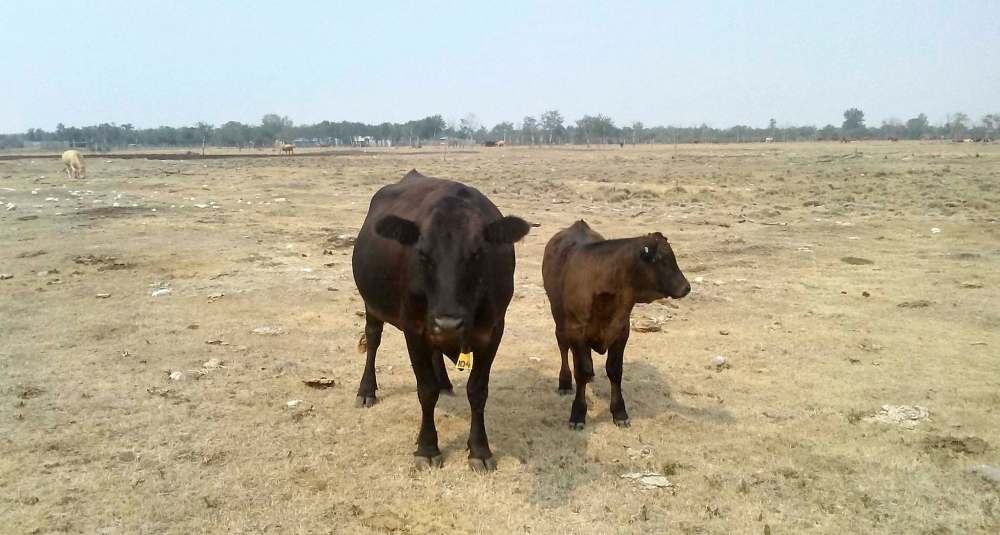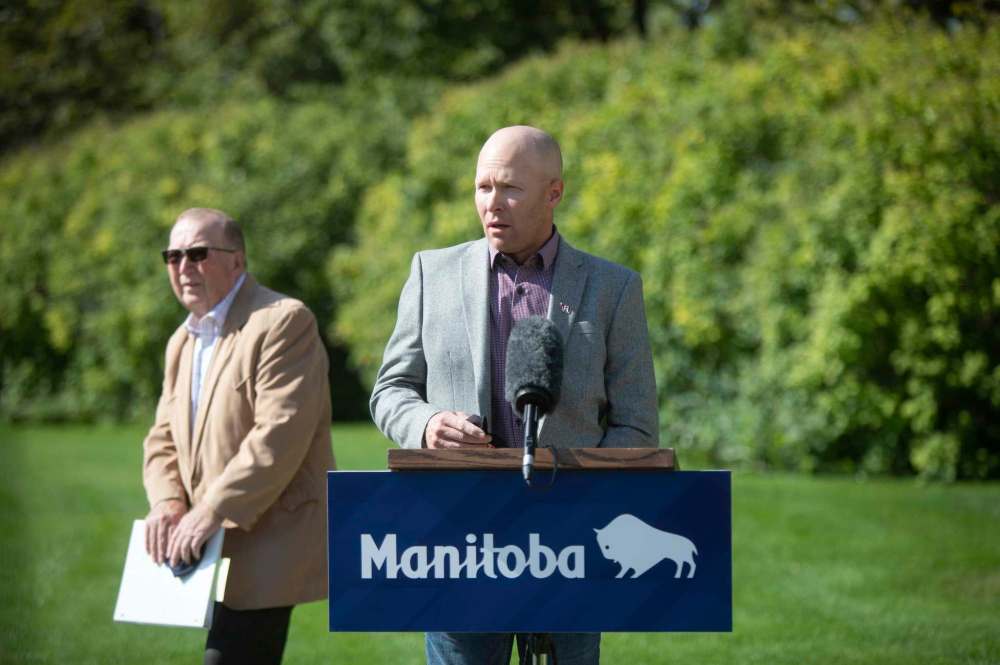‘We want to support our farm families’
Province triggers $155M in disaster relief for livestock industry
Advertisement
Read this article for free:
or
Already have an account? Log in here »
To continue reading, please subscribe:
Monthly Digital Subscription
$1 per week for 24 weeks*
- Enjoy unlimited reading on winnipegfreepress.com
- Read the E-Edition, our digital replica newspaper
- Access News Break, our award-winning app
- Play interactive puzzles
*Billed as $4.00 plus GST every four weeks. After 24 weeks, price increases to the regular rate of $19.00 plus GST every four weeks. Offer available to new and qualified returning subscribers only. Cancel any time.
Monthly Digital Subscription
$4.75/week*
- Enjoy unlimited reading on winnipegfreepress.com
- Read the E-Edition, our digital replica newspaper
- Access News Break, our award-winning app
- Play interactive puzzles
*Billed as $19 plus GST every four weeks. Cancel any time.
To continue reading, please subscribe:
Add Free Press access to your Brandon Sun subscription for only an additional
$1 for the first 4 weeks*
*Your next subscription payment will increase by $1.00 and you will be charged $16.99 plus GST for four weeks. After four weeks, your payment will increase to $23.99 plus GST every four weeks.
Read unlimited articles for free today:
or
Already have an account? Log in here »
Hey there, time traveller!
This article was published 01/09/2021 (1518 days ago), so information in it may no longer be current.
Manitoba has triggered disaster relief for the livestock industry suffering from severe drought that has forced some producers to sell off all or part of their herds with hay and cattle feed — when it can be found — surging to double and sometimes triple the normal cost.
Earlier this month, the province announced it was setting aside $62 million but the programs had not yet been designed.
On Tuesday, the province enacted AgriRecovery, the disaster relief component of the Canadian Agricultural Partnership. It is cost shared 60-40 between the federal and provincial governments, which means $155 million is being made available in this disaster relief for beef cattle producers.

The assistance will come in the form of subsidizing the transportation of feed from between 40 to 600 kilometres away and/or subsidize the cost of moving cattle to the feed at least 40 kilometres up to a maximum one-way distance of 1,000 kilometres. Assistance will also be available to move the animals back to their farms next spring.
(Dairy cattle, bison and horses (for pregnant mare urine production only), sheep and goats are also eligible for similar assistance but at lower payouts.)
The extraordinary support — one of the largest such support programs for the livestock industry in Manitoba in the history of AgriRecovery — is an indication of the severity of the situation.
Tyler Fulton, president of Manitoba Beef Producers, which represents the 6,300 farms that produce beef cattle in the province, said the drought is forcing producers to make very difficult decisions about how many cattle they can keep based on the feed and water resources they have.
“To say this has been a challenging time would be an understatement,” Fulton said. “This has involved herd downsizing. In some cases producers have had to disperse their entire herds. This has been a very stressful situation for everyone involved.”
With an urgency to his voice at a news conference outside of the legislative building on Tuesday, Ralph Eichler, Manitoba’s agriculture and resource development minister, said the program was put together after substantial collaboration with producer groups and municipalities. He said staff have already been trained up to be able to start processing applications as of this morning.
“It is very difficult to choose between feeding your livestock this winter or sending them to auction,” Eichler said. “We want to support our farm families and we believe Manitobans will want to support Manitobans.”
Livestock receipts in 2020 totalled $2.36 billion, representing about one-third of the province’s $7.02 billion in total farm cash receipts. There are typically close to one million beef cattle in the province including breeding cows, bulls and yearlings.
‘To say this has been a challenging time would be an understatement. This has involved herd downsizing. In some cases producers have had to disperse their entire herds. This has been a very stressful situation for everyone involved’– Tyler Fulton, president of Manitoba Beef Producers
The program is designed to allow individual producers to decide what makes the most sense for them. Fulton said moving 2,000 cows, 40 at a time, versus bringing in a truck load of feed that would only feed two cows for the winter may cost about the same for that herd.
“But if you are in situation where you have 70 per cent of your winter feed covered, you just need to figure out the last 30 per cent. Then you would want to keep then at home and bring the feed in,” he said.
In addition to this program that will help cover the cost of moving feed in or moving the animals to the feed for the winter for the period from June 2021 to March 2022, Eichler said the province and provincial stakeholders are also working with the federal government to come up with additional financial support that will help producers who have already been forced to sell off all or part of their herds, to get them back.
“I can’t say too much about that because we can’t announce it before it’s done,” he said.
Fulton was not able to say just how many animals have had to be sold off, but auction marts across the province, which are typically quiet before the end of August, have already been very busy.
For instance, this year the Ashern Auction Mart, one of the largest in the province and located in the Interlake region, which has been particularly hard-hit by the drought, has already sold 1,400 breeding cows.
Kirk Kiesman, the general manager of the Ashern auction, said the recent rains have slowed things down, but he believes that will only be a temporary respite.
“We are a co-op, so the extra business at this time of the year does not make any of us happy,” he said. “It just means we are losing members.”

Saskatchewan and Alberta have also enacted AgriRecovery programs to support the livestock sectors in their respective provinces. This disaster relief program is designed to be only used once every 10 years.
Jill Verwey, vice-president of Keystone Agricultural Producers, applauded the consultation that went into designing the program.
Fulton agreed, saying it was “a thoughtful, collaborative approach.”
martin.cash@freepress.mb.ca

